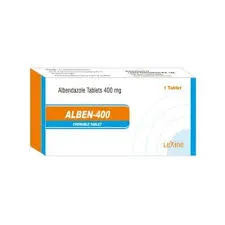- Afrikaans
- Albanian
- Amharic
- Arabic
- Armenian
- Azerbaijani
- Basque
- Belarusian
- Bengali
- Bosnian
- Bulgarian
- Catalan
- Cebuano
- Corsican
- Croatian
- Czech
- Danish
- Dutch
- English
- Esperanto
- Estonian
- Finnish
- French
- Frisian
- Galician
- Georgian
- German
- Greek
- Gujarati
- Haitian Creole
- hausa
- hawaiian
- Hebrew
- Hindi
- Miao
- Hungarian
- Icelandic
- igbo
- Indonesian
- irish
- Italian
- Japanese
- Javanese
- Kannada
- kazakh
- Khmer
- Rwandese
- Korean
- Kurdish
- Kyrgyz
- Lao
- Latin
- Latvian
- Lithuanian
- Luxembourgish
- Macedonian
- Malgashi
- Malay
- Malayalam
- Maltese
- Maori
- Marathi
- Mongolian
- Myanmar
- Nepali
- Norwegian
- Norwegian
- Occitan
- Pashto
- Persian
- Polish
- Portuguese
- Punjabi
- Romanian
- Russian
- Samoan
- Scottish Gaelic
- Serbian
- Sesotho
- Shona
- Sindhi
- Sinhala
- Slovak
- Slovenian
- Somali
- Spanish
- Sundanese
- Swahili
- Swedish
- Tagalog
- Tajik
- Tamil
- Tatar
- Telugu
- Thai
- Turkish
- Turkmen
- Ukrainian
- Urdu
- Uighur
- Uzbek
- Vietnamese
- Welsh
- Bantu
- Yiddish
- Yoruba
- Zulu
डिसेंबर . 14, 2024 05:22 Back to list
Erythromycin Thiocyanate and Its Potential Therapeutic Applications in Modern Medicine
Erythromycin Thiocyanate A Comprehensive Overview
Erythromycin thiocyanate is a derivative of the widely known antibiotic erythromycin, which belongs to the macrolide group of antibiotics. Originally discovered in the 1950s, erythromycin has been crucial in treating a variety of bacterial infections, particularly those caused by Gram-positive organisms. The introduction of various derivatives, such as erythromycin thiocyanate, has enhanced its antimicrobial properties and broadens its application spectrum.
Chemical Composition and Properties
Erythromycin thiocyanate is chemically characterized by the addition of a thiocyanate group to the erythromycin molecule. The structural modifications associated with this derivative improve its pharmacological properties, such as solubility and stability. Erythromycin itself consists of a large lactone ring, which is responsible for its biological activity. The thiocyanate group is theorized to enhance the drug's affinity for bacterial ribosomes, increasing its effectiveness against resistant strains.
Mechanism of Action
Erythromycin and its derivatives, including eryhtromycin thiocyanate, exert their antimicrobial effects primarily through inhibition of bacterial protein synthesis. They achieve this by binding to the 50S subunit of the bacterial ribosome, thereby blocking the translocation of peptide chains during protein synthesis. This action ultimately leads to the cessation of bacterial growth and replication. The addition of the thiocyanate group may alter the binding affinity and allow for enhanced activity against certain pathogens that have developed resistance to standard treatments.
Therapeutic Applications
Erythromycin thiocyanate has shown promise in treating various infections, particularly those affecting the respiratory tract, skin, and soft tissues. Its application extends to treating conditions such as pneumonia, bronchitis, and skin infections. The enhanced spectrum of activity also makes it suitable for use in cases where bacterial strains are resistant to conventional antibiotics. It has been particularly beneficial for patients allergic to penicillin, providing an alternative treatment option.
erythromycin thiocyanate

Resistance and Challenges
Like many antibiotics, the emergence of bacterial resistance presents a significant challenge in the clinical use of erythromycin and its derivatives, including erythromycin thiocyanate. Resistance mechanisms may include the modification of drug target sites, increased efflux of the drug, and enzymatic degradation. These adaptations necessitate ongoing research to evaluate the effectiveness of erythromycin thiocyanate against resistant strains and to develop strategies to counteract resistance.
Safety and Side Effects
Erythromycin and its derivatives are generally well-tolerated, but side effects can occur. Common side effects include gastrointestinal disturbances, such as nausea, vomiting, and diarrhea. More serious but rare side effects might include liver toxicity and cardiac arrhythmias, especially when taken in conjunction with certain other medications. Patients are advised to discuss their medical history and current medications with healthcare providers to minimize potential risks.
Future Directions
Research into erythromycin thiocyanate continues, particularly focusing on its pharmacodynamics, optimal dosing regimens, and potential combination therapies. With the ever-evolving landscape of antibiotic resistance, there is a pressing need to understand how derivatives like erythromycin thiocyanate can be used effectively in modern medicine. Investigations into its use in combination with other antibiotics may provide synergistic effects that could overcome resistance, enhancing its clinical utility.
Conclusion
Erythromycin thiocyanate represents a significant advancement in the field of antimicrobial treatment, offering an alternative for patients with resistant infections. Its mechanism of action, coupled with modifications that improve its effectiveness, underscores its importance in contemporary medical practice. Continued research and vigilance are essential to ensure its successful use in combating the growing challenge of antibiotic resistance, making it a vital component of our therapeutic arsenal against bacterial infections. By remaining aware of its properties and potential, healthcare providers can better serve their patients and contribute to the broader endeavor of effective antibiotic stewardship.
-
Guide to Oxytetracycline Injection
NewsMar.27,2025
-
Guide to Colistin Sulphate
NewsMar.27,2025
-
Gentamicin Sulfate: Uses, Price, And Key Information
NewsMar.27,2025
-
Enrofloxacin Injection: Uses, Price, And Supplier Information
NewsMar.27,2025
-
Dexamethasone Sodium Phosphate Injection: Uses, Price, And Key Information
NewsMar.27,2025
-
Albendazole Tablet: Uses, Dosage, Cost, And Key Information
NewsMar.27,2025













